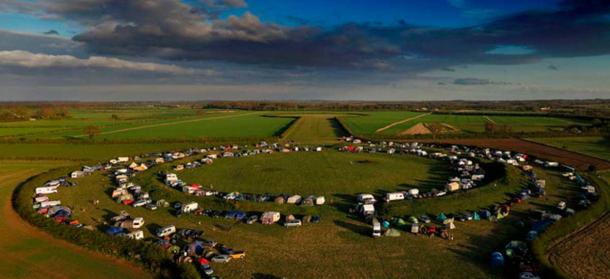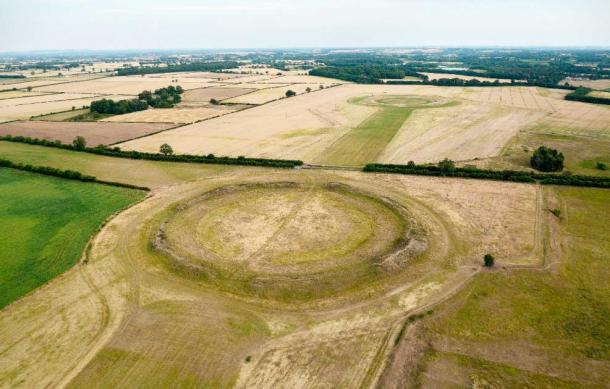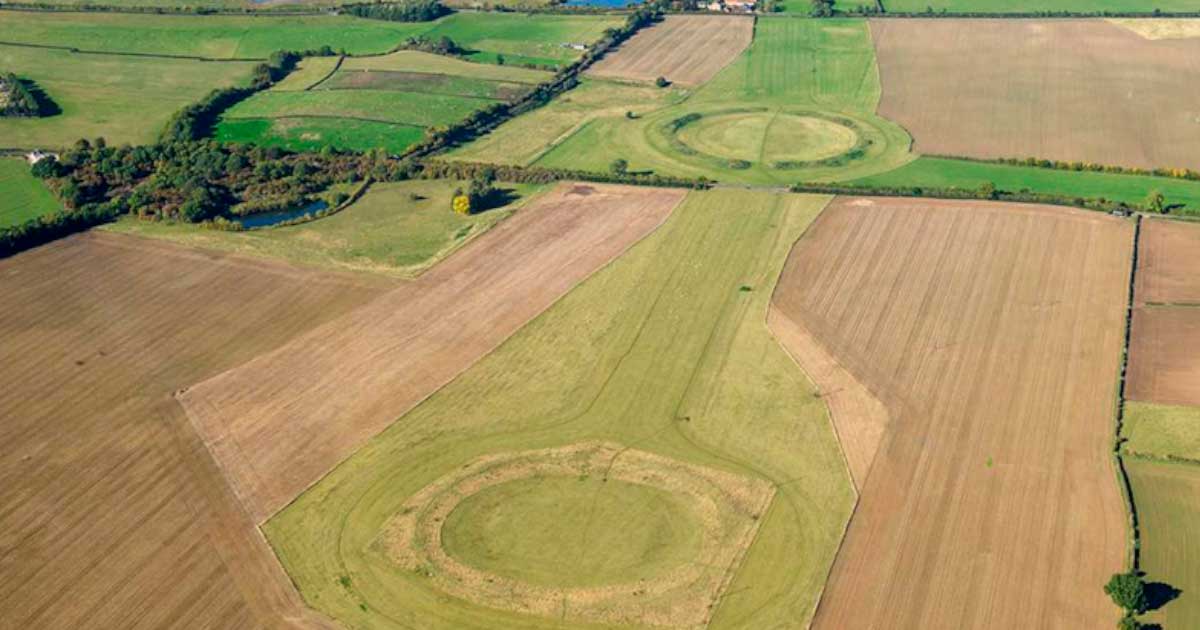Thornborough Henges: England’s Majestic Stonehenge of the North Finally Opened to the Public
As the culmination of several years of sensitive negotiations, the preservation organizations Historic England and English Heritage have finally secured ownership and full control of two-thirds of the splendid Thornborough Henges, a massive set of interconnected late Neolithic earthen monuments located near the city of Ripon in North Yorkshire. As befits their mission to promote interest in historical preservation, Historic England and English Heritage will open two of the three earthwork circles or henges that comprise this large, landscape altering and geometrically precise site for public visitation, starting immediately.
Saved For the Nation
Previously, the two circular henges and the surrounding land was owned by the construction company Tarmac. The firm at one time was quite active quarrying in the area, and there was much concern that this might end up damaging the Thornborough Henges site.
But Historic England, the UK government’s heritage advisor, began negotiating with Tarmac in 2016, to see if they would be willing to transfer control of the land to the preservation community. Tarmac eventually agreed to this proposition, and in 2023 the donation process was finally completed and legal ownership of the land was transferred to Historic England.
- The Sacred Prehistoric Neolithic Complex of the Thornborough Henges
- Goseck Circle: The Oldest Known Solar Observatory
The Thornborough Henges site has now been moved from the at-risk heritage register to England’s National Heritage Collection, a status it shares with Stonehenge, Dover Castle and several forts near Hadrian’s Wall. Management of the site will be handled by English Heritage, and visitors were officially welcomed onsite beginning on February 3rd. At least for the time being only the center and southernmost circles are open for tourists, since the northernmost henge is covered by forest land and remains in private hands.

Festival at Thornborough Henges, 2013 (Public Domain)
“The Thornborough Henges and their surrounding landscape form part of the most important concentration of Neolithic monuments in the North of England,” said Historic England chief executive Duncan Wilson, in an Historic England announcement of the upcoming opening.
“They are a link to our ancient ancestors, through thousands of years, inspiring a sense of wonder and mystery. We are thrilled to have acquired this highly significant site for the nation, ensuring that these magnificent monuments are safe and will be preserved for generations to come.”
The impressive installation at Thornborough (a small village near Ripon) is not unique or solitary. It is one of six henge sites that have been discovered in and around the area, none of which are separated by more than six miles (10 kilometers). But even among the larger group the Thornborough Henges stand out as perhaps the most historically significant ancient site in England located north of the Salisbury Plain, where Stonehenge was built.
And in fact the Thornborough Henges have been dubbed ‘the Stonehenge of the North,’ in recognition of the geometric similarities between England’s most famous stone monument and this incredible earthwork installation.
- Was the Massive Stone Circle of Avebury In Honor of a Humble Neolithic House?
- The Neolithic Builder of the Aberdeenshire Recumbent Stone Circles

Thornborough Henges prehistoric Neolithic henge trio near Masham, Yorkshire. View over central to south henge ,which are now under the management of Historic England. (David Matthew Lyons/Adobe Stock)
The Thornborough Henges: A Closer Look
The Thornborough Henges were constructed during the Bronze Age (between 3,500 and 2,500 BC). Each henge is between 787 and 900 feet (240 and 275 meters) in diameter, and the three circles are separated from each other by two gaps of 1,800 feet (550 meters). From one end to the other the three circles cover an area of approximately one mile (1.6 kilometers).
The raised earth banks that surround the cleared central areas of the henges are about 10 feet (three meters) high as of now, but it is estimated they were once about six feet higher and topped with glistening white gypsum.
The henges are oriented on a northwest-by-southeast axis, and were clearly constructed one after another and in alignment with one another. While the henges come close to forming a straight line, there is a slight turn or dogleg in the formation that compromises this straightness.
This is not an error, however, as it mimics the structure of Orion’s Belt, a prominent astronomical alignment of three stars that appears in the northern hemisphere sky during the wintertime. Notably, the shape of Orion’s Belt is also matched on the ground by the ancient Egyptian pyramids at Giza and by the pyramids of Teotihuacan in ancient Mexico.
The Thornborough site is located approximately 270 miles (435 kilometers) north of Stonehenge. Yet the geometric commonalities of the two sites link them together and connect them with a single monument-building culture that frequently looked skyward for spiritual and cultural inspiration. While Stonehenge is a marvel at ground level, it is only through an aerial view that the henges at Thornborough reveal their grand scale, along with the precision and attention to detail that mark them as such a special creation.
A Neglected National Treasure Will Be Neglected No More
The Thornborough Henges should be famous and top the list of northern England’s most visited tourist attractions. But up to now this hasn’t been the case. Despite their impressive size and magnificently customized geometric shapes, the henges remain little known outside their immediate region.
This is an unfortunate reality that local history buffs are hoping can now be corrected, for the sake of the local tourist trade and for the satisfaction of those who want all the important structures, monuments and artifacts that highlight the country’s rich heritage to get the attention they deserve.
“The Thornborough Henges site has enormous potential to help tell the story of ancient Britain and I very much welcome this announcement about its future – its safeguarding and preservation for the nation,” declared United Kingdom Prime Minister Rishi Sunak, in an official statement celebrating the opening of the site. “Comparatively few people are aware of its significance – both locally and nationally. I hope many more will come to appreciate this little-known gem of our history and while doing so provide a welcome boost to the local visitor economy.”
The Prime Minister is originally from North Yorkshire, and that explains his knowledge of the henges and his interest in this development. But even locally, awareness of the fabulous and remarkable nature of the Thornborough Henges has been surprisingly limited.
“I live in Yorkshire and have a good understanding of the landscape and the area,” said English Heritage representative Joe Savage, in an interview with the Guardian. “But when I started looking at the site a few years ago, it came as a surprise to me. “It is an incredible series of monuments. They’re awe-inspiring … so it is fantastic that they’re now in national care.”
Now that the site is finally open for public visitation, the number of people who know about and appreciate the Thornborough Henges is likely to increase exponentially.
Top image: The three connected earthwork henges at Thornborough. Source: English Heritage
By Nathan Falde



















